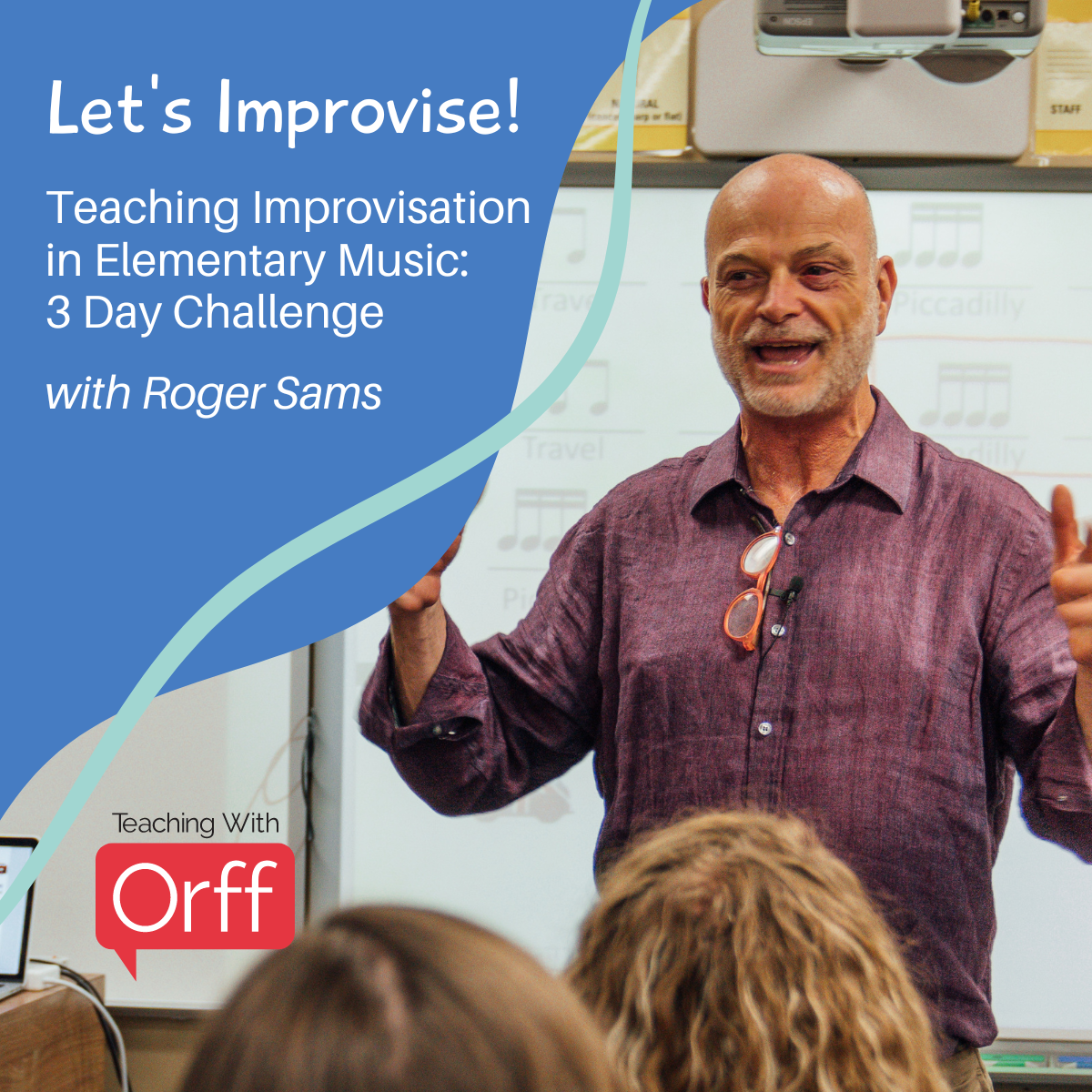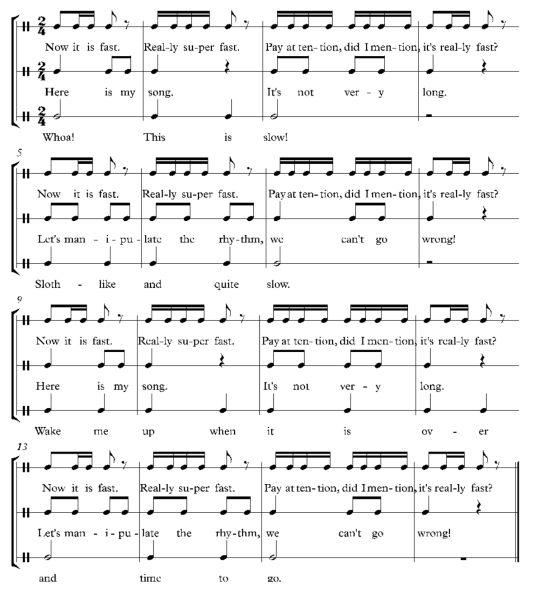
Nature’s Second Instrument: Rhythm
It’s time to have fun with rhythm!
Explore possibilities of rhythm and form in Cyndee Giebler’s second installment on Elemental Composition!* Using just quarter notes, two eighth notes, and quarter rests, discover Cyndee’s ideas for using a simple 8-measure composition as inspiration for providing a ready-made musical context for just about anything you and your students are passionate about. Simply stated, you can start having fun in a “snap!”
Let’s begin with three basic components: quarter note, two eighth notes, and quarter rest. These three items can be combined into two beat “blocks” in a variety of ways:
In the above examples, numbers 6 to 9 are a bit trickier than 1 to 5, especially for students still developing literacy skills. This is, of course, highly dependent upon the experience and skill level of your students, but for now, we will use only the first five blocks, like so:
Here comes the fun part: you can combine these blocks any way you wish to make an interesting rhythmic piece! This can be accomplished through the miracle of:
Form
Think about simple forms for a moment. What are the possibilities? Here are a few:
AABA
ABAB
ABBA
AAAB
ABBB
AABC
ABAC
ABBC
That is a long list of possibilities created with only 3 components! Let’s make some music out of all of this.
- Choosing two blocks, let’s make an A phrase using numbers 5 and 1;
- Now, a B phrase with 4 and 3;
- Finally, we will select a form from our list of possibilities: ABAB;
Our resulting piece would look like this:

As my students would say, “Mrs. Giebler, this sounds REAL!” It sounds real because:
a) it IS real
and
b) it has form
Try it with your students if you haven’t done something similar already. They will feel very successful!
Here’s another example. A= 2+3 and B= 5+5.
The form is AABA. (Yes, it’s really AA’BA, but A’ is just a rhythmic variant of A). I added words for fun:

A musically satisfying piece in only 8 bars! Wait a minute, does it say manipulate the rhythm? The A section rhythm has already been manipulated somewhat, but the whole piece can be transformed through the magic of:
Dimunition and Augmentation
Diminution means assigning the given note values ones of shorter duration. The overall effect is one of an increase in tempo. Here is the original piece in diminution, again with words:
Augmentation is changing the original note values to ones of longer duration. While the tempo really has not changed, it will seem slower. Here is our example in augmentation:
We can combine all of these examples into an even bigger piece with three independent lines. Use the augmentation example as the foundation. Layer the original rhythmic example on top. Note that you will have to repeat the original example in order to accommodate the length of the augmented example. The example in diminution will need to be repeated four times:
Consider having students perform their compositions using body percussion, speech, small percussion, pentatonic melody, and movement – the possibilities are plentiful to have fun with rhythm!
*Read Cyndee’s first installment in this series on ACEMM’s website: Nature’s First Instrument: The Body
Cyndee Giebler lives and teaches in northeast Wisconsin. She is a graduate of the University of Wisconsin-Green Bay and completed her master’s degree at the University of St. Thomas in St. Paul, Minn. She has presented workshops for American Orff-Schulwerk Association chapters around the country as well as state, regional, and national conventions. In her spare time, Cyndee enjoys composing and arranging music for classroom use, children’s chorus, and elementary strings.
See all posts by ACEMM
6 Comments
Leave a Comment
Sign up for latest Orff Tips, Lesson Plans and Advocacy Tools

Empower your students to create their own music in this free 3-day challenge with Roger Sams. (Lessons delivered via email)

Learn about the legendary factory that started it all and why so many teachers like you love our instruments.







A huge thank you Cyndee from Beirut – Lebanon
Cyndee Giebler, you’re amazing. This is so clever and useful.
Thank you, Cyndee for sharing your creative ingenuity.
What a wonderful ideas! Thank you so much for sharing!
I’m getting ready to teach a fun poem I wrote called, “Candy, Candy” just in time for Valentines Day. Cindy’s simple, elemental, teaching sequence will be a great way for groups of students to create and compose sections of a rondo using the names of their favorite candies (as building blocks for their compositions). I’ve never had students try combining 2 building blocks to create an A section and 2 different building blocks to create a B section and then in turn using those A & B sections to create their own compositions. Simple and smart! I can’t wait to try it. I think this may be my missing instructional step. Thanks, Cindy!
Thank you so much! I love the progression of difficulty.